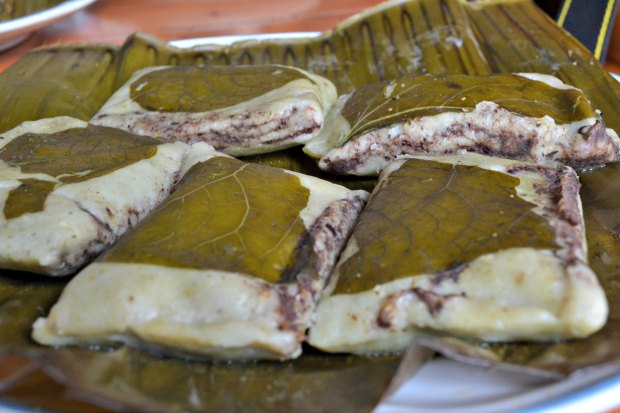Mèrida, Yucatàn (April 19, 2021).- Entering the world of Yucatecan gastronomy is entering a world where there is no turning back… once you taste the deliciousness of its cuisine, you will not want to stop trying it. Thus, talking about tamales is not just talking about a typical Yucatecan meal or gastronomy, it is talking about culture and traditions.
Yucatecan tamales can be prepared baked, steamed, or even buried, and are wrapped with different leaves, such as banana, almond, and holly leaf (hoja santa). They are filled with corn dough, pork, chicken, egg, ground pumpkin seed, chaya, or xpelón, which is a type of bean from the region. Today, in The Yucatan Times we list those that you cannot miss on your next visit to the Yucatan Peninsula.
1.- Tamales Torteados or Vaporcitos
These are the most common or typical tamales in Yucatan and are the protagonists on the day of Candelaria. These Yucatecan tamales are made from thin dough, stuffed with chicken, turkey, or pork, and are wrapped in banana leaves and steamed, hence the name of vaporcitos. They are also called torteados because of the way in which the dough is spread to be able to put the filling.

2.- Tamales Colados
Its name derives from the fact that to make this type of tamale the dough needs to be strained, which gives it a soft and delicious texture. These tamales are steamed and wrapped in a banana leaf and filled with chicken. They are usually accompanied by tomato sauce with habanero chili.
3.- Tamales con Espelòn
Like the Vaporcitos, these tamales are also stuffed with chicken, with the big difference that the dough has Xpelón seeds, which is a type of Yucatecan bean, the same black color, but with a very peculiar flavor. This bean is widely used in Yucatecan gastronomy and adorns the Mucbi Pollo as we will see later. Xpelón tamales can be baked, buried, or steamed.
4.- Tamal de Maculán or holy leaf
This tamale is another of the vegan options of Yucatecan food. It has as filling ibes beans, which are a type of white beans, ground pumpkin seed, tomato sauce, and chives. Besides the fact that the filling is different, the leaf in which the tamale is wrapped also changes, instead of being with banana leaf it is wrapped with holy leaf (Hoja Santa), which gives it an exquisite flavor. This tamale is traditionally eaten during Easter.

5.- Brazo de Reina
This is one of the vegetarian options in Yucatecan food and it is very popular to eat it during Easter. This tamale is prepared filled with chaya leaf, ground pumpkin seed, and hard-boiled egg, it can also be filled with ball cheese. It is served bathed in tomato sauce with habanero pepper.

6.- Chaya tamales
These tamales are a variation on Brazo de Reina and are a delicious option for vegans. They are steamed tamales and the dough has pieces of chaya, unlike Brazo de Reina, these tamales have no filling, they are very thin dough tamales and are only accompanied with spicy tomato sauce. These types of tamales are eaten mainly at Easter since they are easy to cook and very inexpensive.

7.- Chachacuah or buried tamales
The buried tamales or Chachacuahs as they are known by the Yucatecan people are tamales stuffed with chicken or pork, they can have Xpelón and are wrapped in a banana leaf. The big difference between this type of tamale and the Mucbi Pollos is their size. This tamale is also typical during the feast of the Day of the Dead.

8.- Mucbi Pollo (PIB)
These are the most famous tamales in the region and it is typical that they are cooked on the Day of the Dead, known as Hanal Pixan. Mukbil pollo comes from the Mayan language: “muk” which is to bury or bury, and “bil” to stir. It is a large tamale, which is wrapped in banana leaves and buried to be cooked on firewood, which gives it a delicious flavor. The Mucbi Pollo can have Xpelón and is stuffed with chicken, pork or turkey. You cannot miss them!

After reading this article, you already want to eat one of these delicious tamales, but tell us, which ones have you tried? Which one did you like the most? or Which one would you like to try? Share your comments with us.


